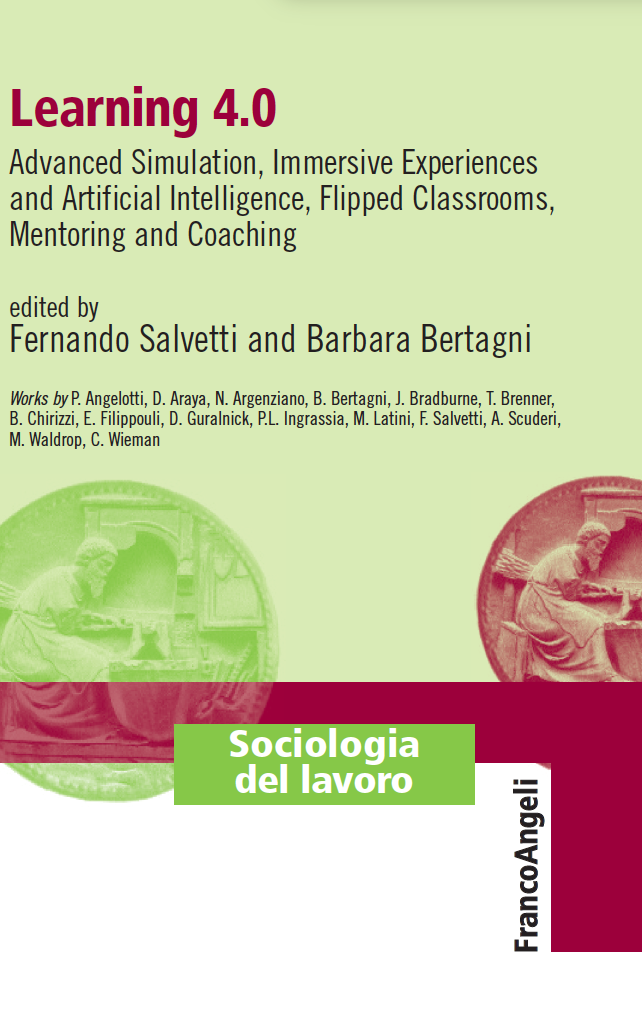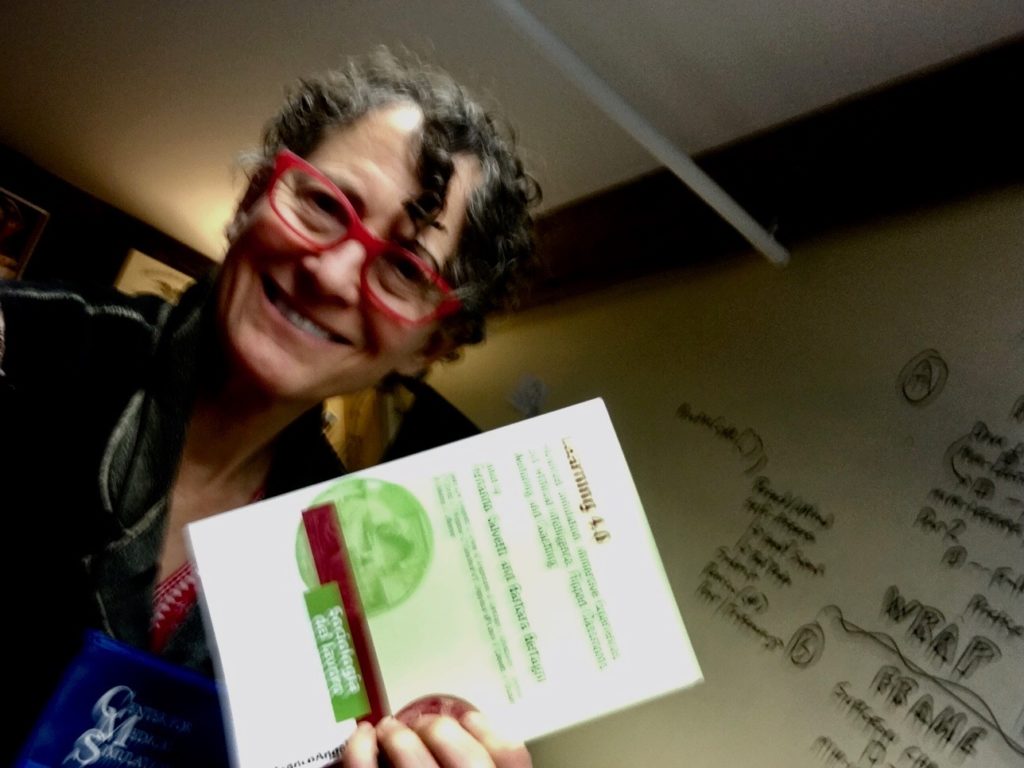Are you ready for the 4.0 revolution?
How to improve the way that science, technology, engineering, and math, as well as the arts and the humanities, are taught and learned?
What are you doing as an educator to grasp the 4.0 revolution?
Advanced simulation, immersive experiences and artificial intelligence, flipped classrooms, mentoring and coaching in the age of digital revolution. This is Learning 4.0, our latest book!
Are you ready for the 4.0 revolution?

The cover of the book
Learning 4.0
4.0 is the ongoing technology revolution that is changing the way we live, work and relate to one another. Billions of people are connected by mobile devices, unprecedented processing power, storage capabilities and access to knowledge. We are at the confluence of artificial intelligence, robotics and the Internet of things — to name a few, with quantum computing as a next scenario.
Are you able to deal with advanced simulation in enhanced reality environments (merging virtual, augmented and mixed reality)? Or with immersive experiences and flipped classrooms? What about interactive infographics or online, just-in-time and on-the-job learning? What about mentoring, coaching, learning facilitation, gamification, Socratic dialogues, adaptive learning, self-directed and learner-generated activities or ATAWAD learning (anytime, anywhere, any device)?
Leading authors for key-topics and top readers
A Nobel laureate, some seasoned professionals and smart scholars with a practical touch: a pretty diverse team with a strong mix of competencies and experiences. Patrizia Angelotti, co-founder and managing partner of Accurate Solutions for advanced medical simulation. Daniel Araya, technology consultant and advisor to governments and corporations. Nicola Argenziano, HR director from a multinational company. Barbara Bertagni, co-founder and managing partner at Logosnet. James Bradburne, general director of the Pinacoteca Brera and Biblioteca Braidense in Milan. Tamara Brenner, executive director of the Bok Center, Harvard University in Cambridge Mass. Barbara Chirizzi, executive performance coach. Elizabeth Filippouli, Oxford University Said Business School’s 42 top graduate entrepreneur, founder, and chief executive officer at Global Thinkers. David Guralnick, founder, and president of Kaleidoscope Learning, president of the International e-Learning Association and adjunct assistant professor at Columbia University’s Teachers College in New York. Pier Luigi Ingrassia, director of the Health Simulation Centre Simnova from the Eastern Piedmont University in Novara. Marco Latini, chief financial officer from a leading corporation. Fernando Salvetti, co-founder and managing partner at Logosnet. Antonio Scuderi, founder, and chief executive officer at Capitale Cultura
Group and ARt Glass in Milan. Mitchell Waldrop, physicist turned science writer and features editor for Nature. Carl Wieman, physicist, and educationist at Stanford University as well as Nobel Laureate in Physics.
Leading authors for key-topics and top readers!

Prof. Jenny Rudolph, PhD: a top reader from Boston.
STEAM education
STEAM is the extension of an acronym that originally stands for science, technology, engineering and math, with the arts added because STEM alone misses several key components that many employers, educators and parents have voiced as critical to thrive in the present and rapidly approaching future. It’s a movement that has been taking root over the past several years and is surging forward as a positive mode of action to truly meet the needs of a 21stCentury society. STEAM is an educational approach to learning that uses science, technology, engineering, the arts and mathematics as access points for guiding learner inquiry, dialogue and critical thinking. The end results are learners who take thoughtful risks, engage in experiential learning, persist in problem-solving, embrace collaboration and work through the creative process. STEAM is a way to take the benefits of STEM and complete the package by integrating these principles in and through the arts.
Almost all around the world, excluding some very authoritarian countries, the current buzzwords are all about ambiguity and complexity, multi-level problem setting and solving, systems thinking, communication, creativity and disruptive innovation, cognitive flexibility, knowledge sharing, contextual and cross-cultural intelligence – at any level and as an output of any educational process. Governments, institutions and corporations are being reshaped, as are systems of education, healthcare and transportation, among many others. So, we are in need of rethinking learning approaches and paths, to grasp the challenges and opportunities of the fourth industrial revolution that is growing the integration of many different disciplines and discoveries. For instance, the interdependence between digital fabrication technologies and biology, or the link between ambient computing and our personal devices becoming more and more embedded within our personal ecosystems – listening and talking to us, and trying to anticipate our needs. The pervasive power of digitalization and information technology is a key feature of the 4.0 world, accompanied by the artificial intelligence that is infiltrating our lives at an unprecedented speed.
e-REAL as a Cornerstone in Learning 4.0
Effective STEAM teaching can propel a country to the forefront of an innovation-based global world. e-REAL is an ideal mean to propel STEAM education and training because it is designed around five pillars: systems thinking, model-based reasoning, quantitative reasoning, equity, epistemic and ethical outcomes; and STEAM communication and outreach. These pillars are substantial elements of an effective STEAM curriculum because they are critical for the successful execution of real-world, STEAM-related, activities.
As both educational approaches and information technologies evolve, so do the possibilities for more immersive learning and teaching techniques. e-REAL is using cutting edge technologies to create both a virtual and a physical environment in a classroom, that immerses students in real life situations (designed by visual storytelling techniques), with possibilities to interact simultaneously with peers, tutors and learning facilitators, thematic experts and colleagues (both on-site and remotely), as well as consult literature, records and other written information–that are available as multimedia content. In the e-REAL scenario, learners practice handling realistic situations rather than learning facts or techniques out of context.
Learners need to practice thinking – and behaving – like a scientist in the field. In the end, they enter the complexity of real life with a smarter approach. That is why e-REAL is a cornerstone.

e-REAL for Learning 4.0


